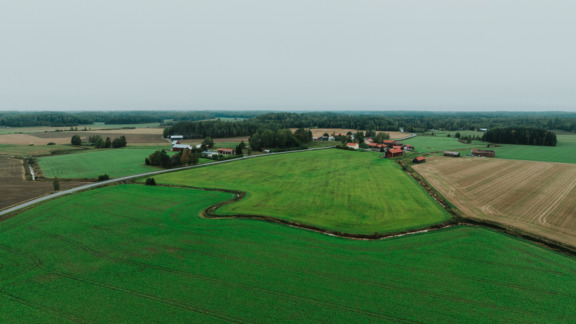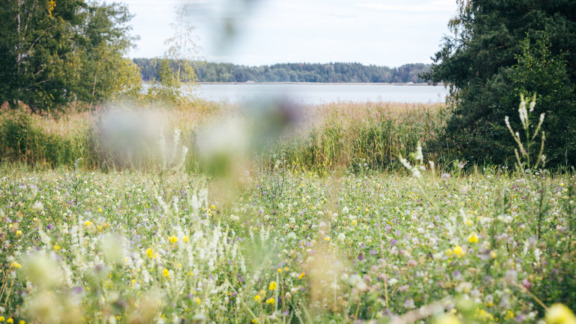Transition to regenerative agriculture: action and co-operation needed
This blog has been inspired by a roundtable at 14th of February 2021 organized and chaired by SYSTEMIQ, and attended by Earthwatch Europe, IDDRI, Munich Re, Robert Bosch Foundation, Soil Capital, Valio and BSAG.
Regenerative agriculture is a rising phenomenon around the world. According to recent news, Biden’s climate change strategy looks to pay farmers to curb carbon footprint. By adapting more regenerative practices, it is estimated that American farmers can sequester a large enough portion of emissions to avert a climate catastrophe. As a result, the Biden administration now wants to steer $30 billion in farm aid money from the USDA’s Commodity Credit Corporation to pay farmers to capture carbon in their soil.
And a different perspective, Vogue listed regenerative agriculture as one of major sustainability trends that could propel the industry forward in 2021. An increasing number of brands, including Eileen Fisher and Patagonia are looking at regenerative agriculture. In fact, designer Mara Hoffman recently released a range of Climate Beneficial knitwear, which is carbon negative thanks to regenerative practices.
More widely, in the business, there are many recent ambitious commitments to regenerative sourcing. General Mills has committed to advance regenerative agriculture on 1 million acres of farmland by 2030. Cargill is supporting farmer-led efforts to adopt practices and systems foundational to regenerative agriculture practices across 10 million acres of North American farmland over the next 10 years. Walmart has set goal to become a regenerative company. Nestlé is already working with over 500 000 farmers and 150 000 suppliers to support them in implementing regenerative agriculture practices, and expects to source over 14 million tons of its ingredients through regenerative agriculture by 2030, boosting demand for such goods. Valio’s goal is not just to reduce milk’s carbon footprint, but to cut it completely by 2035. For example, Valio is training all their dairy farmers in carbon farming in co-operation with BSAG.
***
In the roundtable, we discussed about the actions needed in Europe to support the transition to regenerative agriculture. European governments are now tasked with developing national strategic plans for implementing the 2022-2028 CAP. However, given the divergence of the debate across the EU, there is a risk these plans will be insufficient to bring about the necessary change. It therefore falls to the private sector to work with farmers, consumers and governments to show that a better way of farming is possible, affordable and desirable.
One of the participants, Soil Capital, found that the biggest barriers faced by their partner farmers in France were a lack of confidence in new practices, fear of loss and lack of market incentives .We have noted that similar barriers exist in Finland, and the Carbon Action platform where farmers, advisors, scientists, companies, and decision-makers work together – works to overcome them. Carbon Action is farmer-based and constantly taking shape in interaction with the farmers. 100 Carbon Action pilot Farms test practices, collect experiences and share their journey towards farming more regeneratively. Farmers benefit directly from peer learning. New carbon farmers have been gained through business cooperation (as an example carbon farming training with Valio) and through the Carbon Action Club – which has now about 700 members. The recently launched E-college for Regenerative Agriculture makes the results of the work done on the pilot farms available to all. The E-college offers all Finnish farmers an equal opportunity to improve their yield and set an example that can be copied anywhere. The e-college is launched in Finnish and Swedish, but with an aim to scale internationally once feedback is collected in Finland.
Inspired by these examples, the round table then considered how they could be scaled up. SYSTEMIQ proposed setting a stretch target of making 75% of EU agriculture by 2030. Achieving such a target would require farmers, food companies and governments to work together to overcome technical, commercial, financial and cultural barriers. To this end, they are proposing to set up an ‘Empowering Farmers’ action group to identify the steps needed and begin the transition towards a 75% regenerative system by 2030.
As the names indicate, we at Baltic Sea Action Group (BSAG) and Carbon Action are action-oriented – and thus happy to participate also in this action group. One thing is sure, in order to succeed, we need to work together and in a constructive manner. Regenerative agriculture is a win-win concept where the farmer, climate, biodiversity and waters all benefit.
Laura Höijer, content director, Baltic Sea Action Group
You can learn more in two events in March:
9th of March: Carbon Action science webinar: Soil, carbon sequestration and water protection
10th of March: Forum For the Future of Agriculture: Racing to scale regenerative farming – Forum For Agriculture



